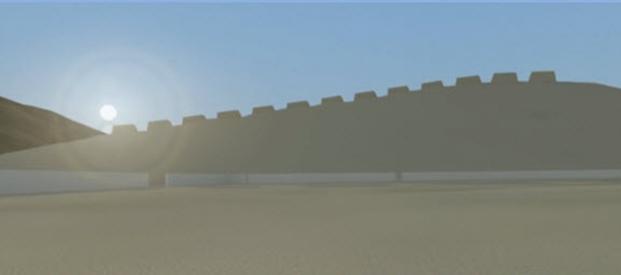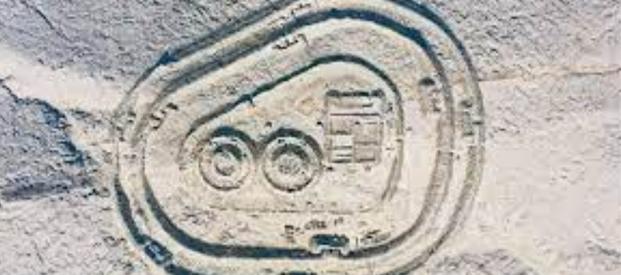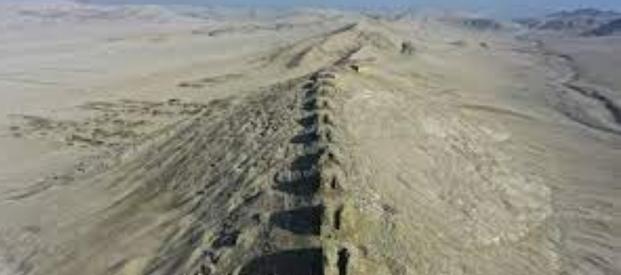The Ancient Solar Calendar at Chankillo
 2,300 years ago, people of northern Peru designed an extraordinary observatory which could be used as a solar calendar. Built on a ridge in the Casma Valley at Chankillo, a structure of 13 towers, the observatory allowed remarkably accurate astronomical observations by people with an exceptionally sophisticated understanding of astronomy and the rising and setting arcs of the sun.
2,300 years ago, people of northern Peru designed an extraordinary observatory which could be used as a solar calendar. Built on a ridge in the Casma Valley at Chankillo, a structure of 13 towers, the observatory allowed remarkably accurate astronomical observations by people with an exceptionally sophisticated understanding of astronomy and the rising and setting arcs of the sun.
Farmers and religious leaders used the calendar to regulate planting and harvest times and to plan religious festivals. Not only could they determine the solstices and equinoxes, but also the time of year with a precision of between one and two days.
Built in 250 to 200 BC, the calendar consisted of thirteen towers which stretched north to south along the ridge and were positioned in such a way that they precisely matched the movement of the sun throughout the year. On either side of the ridge was an observation point which enabled people to watch both the sunrise (from the west side) and the sunset (from the east).
On a nearby hilltop was a Fortified Temple, built with triple-walls for strength and false entrances to confuse unwelcome guests.
What makes this calendar special?
It is the two points of observation, one on either side of the ridge, that give this calendar its extraordinary accuracy and make Chankillo unique. Other solar calendars of the time had only one point of astronomical alignment. Nowhere else in the world is there anything like Chankillo.
Research and conservation
Until quite recently the site was largely unknown and the stones and mortar were gradually eroding due to the inhospitable desert climate.
Archaeological research undertaken in the past two decades indicates that that the site was occupied for only a short time between the fourth century and early first century BCE. The evidence suggests that sun worship existed in northern Peru around two thousand years before the well-known sun cult of the Inca Empire.
In the last ten years conservation work has begun on five of the thirteen towers and one of the nine gates of the Fortified Temple.
A priceless resource
In 2021 UNESCO designated Chankillo a World Heritage Site, in recognition of its priceless importance to our understanding of ancient societies and their achievements in astronomy.
Iván Ghezzi, Chankillo programme director, who studied and worked on the site for two decades said when the UNESCO award was made:
“It is the only observatory from the ancient world that we know of that is a complete annual solar calendar,”
“The towers are positioned in such a way that they match precisely the movement of the sun throughout the seasonal year from two very well-defined viewing points. This has no parallels anywhere in the Americas or the world.”
We are delighted that this unique, and ancient calendar is being conserved for future generations.











